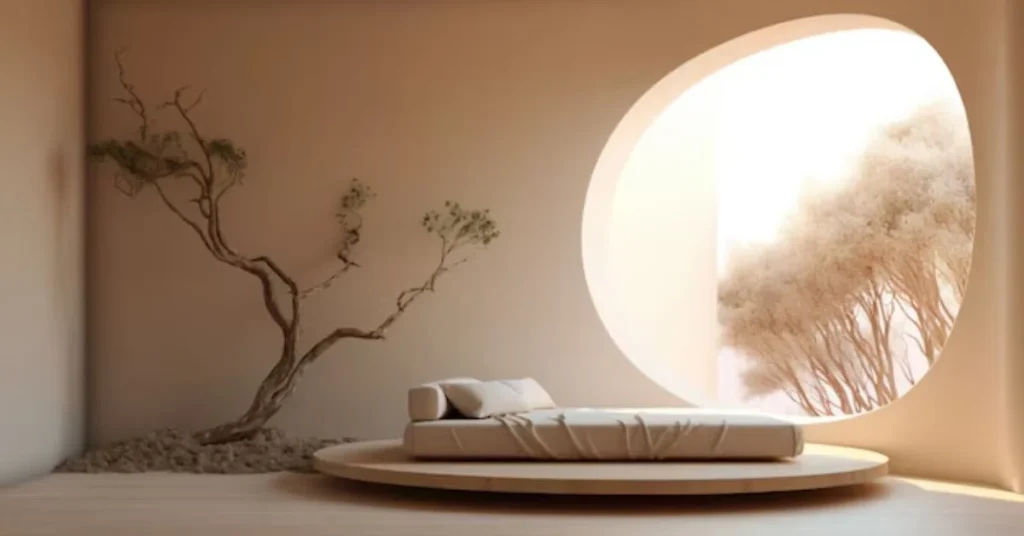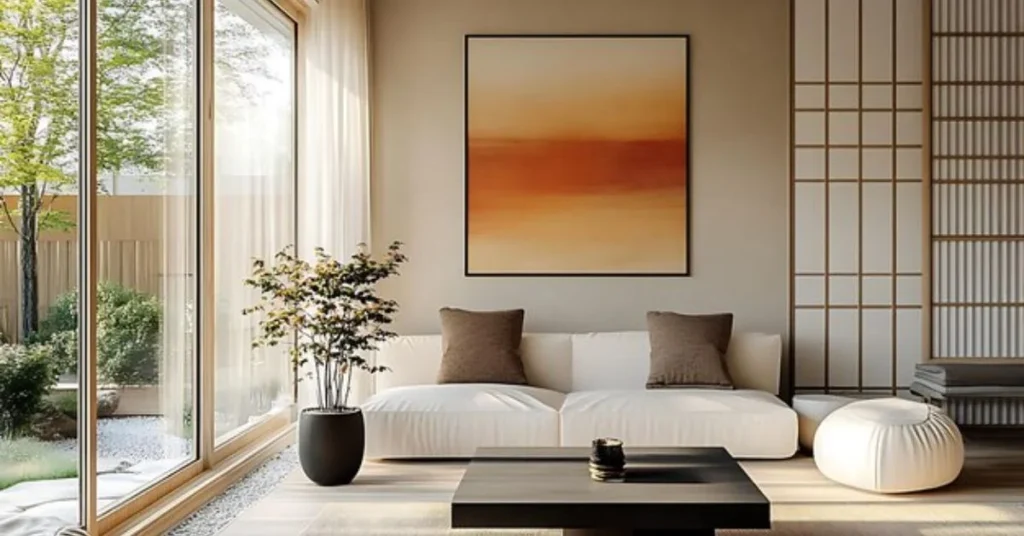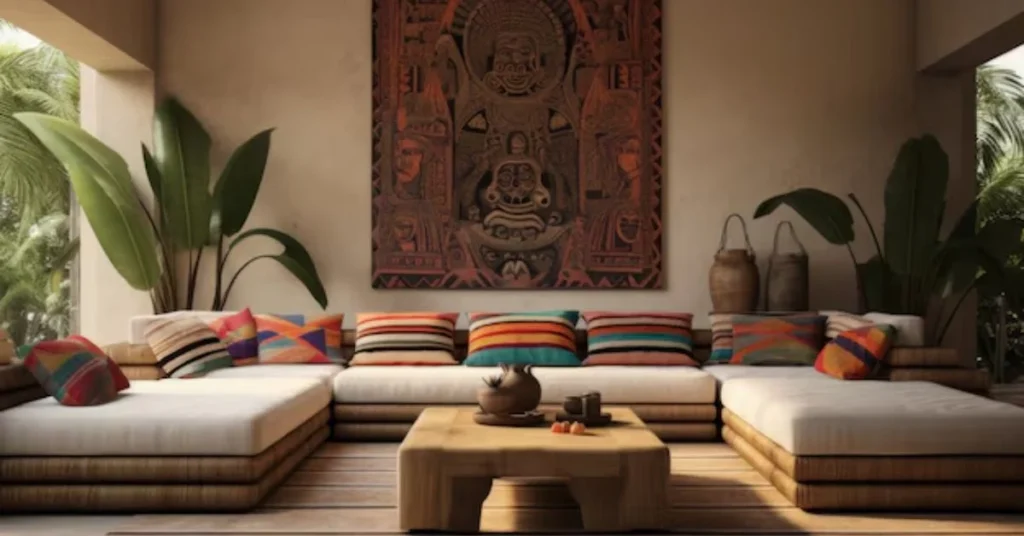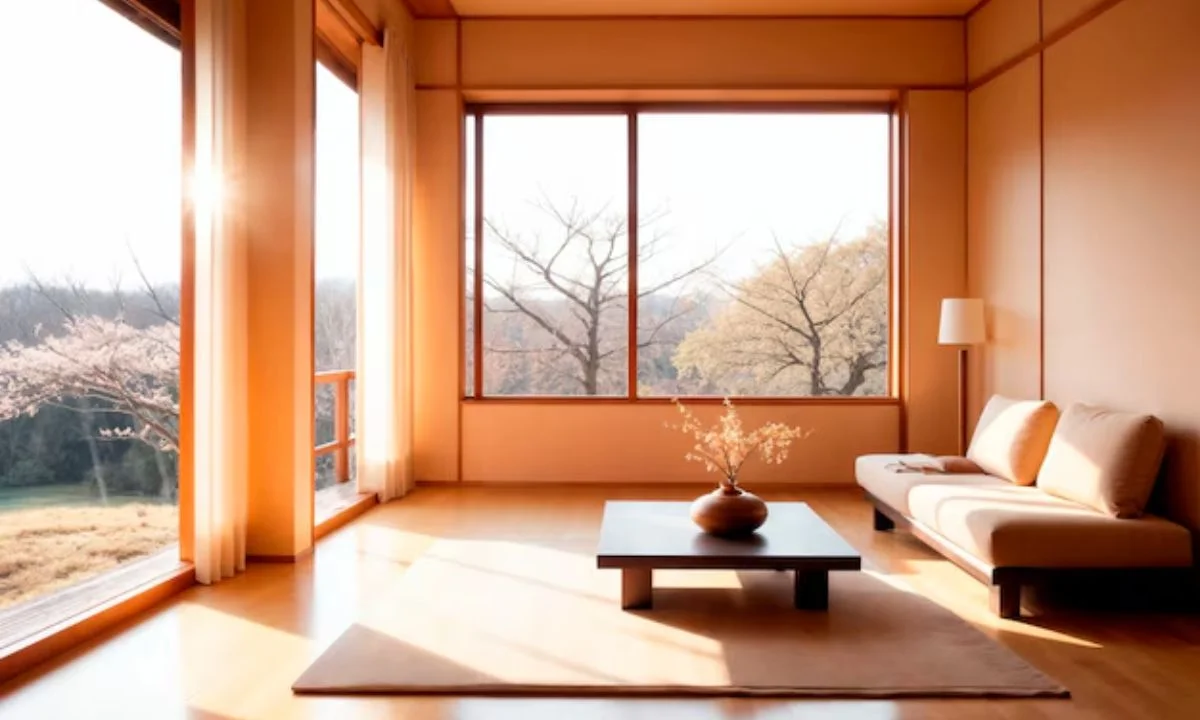Introduction: The fusion of Japanese interior design Japandi living room style has taken the world by storm. Combining the elegance of Japanese minimalism with the warmth of Scandinavian design, Japandi interiors offer a balance of serenity and functionality. In this article, we’ll explore how you can create a Japandi living room that embodies tranquility, simplicity, and comfort, all while maintaining a harmonious living space.
What is Japanese Interior Design Japandi Living Room Style?
The Japanese interior design Japandi living room style is a blend of two design philosophies: the clean, natural elements of Japanese aesthetics and the cozy, functional aspects of Scandinavian interiors. This fusion results in a minimalist, calming space that focuses on clean lines, natural materials, and neutral tones. The goal of Japandi is to create a warm, inviting living area that feels both functional and serene.
Key Features of Japanese interior design for Japandi living room
Minimalism at Its Core
At the heart of Japanese interior design for Japandi living room is minimalism. Every piece of furniture and décor has a purpose. This design avoids clutter, instead focusing on open spaces and essential elements. The simplicity promotes a sense of calm and helps create a peaceful living environment.
Natural Materials
The use of natural materials like wood, bamboo, and stone is another key feature of Japanese interior design for Japandi living room. These elements bring warmth and texture to the space, creating a soothing and organic atmosphere. Wooden furniture, tatami mats, and stone accents are common in Japandi living rooms.
Neutral and Muted Color Palette
The color palette of a Japanese interior design for Japandi living room is typically neutral and muted. Soft shades of beige, gray, white, and earth tones are often used to create a calm, harmonious atmosphere. These colors allow the natural elements to shine and provide a backdrop that enhances relaxation.
How to Create a Japanese Interior Design Japandi Living Room

Choose the Right Furniture
When designing a Japanese interior design for Japandi living room, it’s important to choose furniture that complements both the Japanese and Scandinavian aesthetics. Look for pieces that are simple, functional, and made from natural materials. Low-profile furniture, such as floor cushions and low sofas, are common in Japandi spaces, as they align with the Japanese tradition of sitting close to the ground.
Add Natural Light
Natural light is essential in a Japanese interior design for Japandi living room. Large windows or open spaces allow light to flood the room, making it feel more open and airy. If your space lacks natural light, opt for soft, warm lighting that mimics daylight to keep the atmosphere calm and inviting.
Incorporate Plants and Greenery
Plants play a significant role in creating a calming Japanese interior design for Japandi living room. Adding indoor plants like bamboo, bonsai trees, or ferns not only adds a touch of nature but also helps purify the air. These elements enhance the natural feel of the space and provide a soothing aesthetic.
Must read Cobb Custom Home Design
Decor Tips for a Japanese Interior Design For Japandi Living Room
Focus on Texture and Simplicity
In a Japanese interior design Japandi living room, texture is key to adding depth to a minimalist space. Consider using textured fabrics, such as linen or cotton, for your cushions and throws. Simple décor, like ceramic vases or woven baskets, can add visual interest without overwhelming the space.
Keep Clutter to a Minimum
One of the defining characteristics of Japanese interior design for Japandi living room is the lack of clutter. Everything in the room should serve a purpose. Use hidden storage solutions like low-profile cabinets or baskets to keep your living room tidy and organized.
Incorporate Japanese-Inspired Décor
To capture the essence of a Japanese interior design for Japandi living room, incorporate traditional Japanese décor such as tatami mats, shoji screens, or bonsai plants. These elements add a subtle Japanese influence while keeping the overall look minimalistic.

Benefits of Japanese Interior Design Japandi Living Room
Promotes Calmness and Relaxation
The minimalist approach of Japanese interior design for Japandi living room promotes a peaceful, calming environment. The neutral tones and natural elements encourage relaxation, making your living room a space for unwinding after a busy day.
Enhances Functionality
One of the great benefits of the Japanese interior design for Japandi living room style is its focus on functionality. Every piece of furniture and décor is purposeful, which helps create a more organized and efficient living space. This balance between form and function makes Japandi design both practical and beautiful.
Timeless Aesthetic
The Japanese interior design for Japandi living room style is timeless due to its simplicity and use of natural materials. Unlike trendy designs that may go out of fashion, Japandi interiors are classic and enduring, making them a smart long-term choice for homeowners.
Conclusion
In conclusion, creating a Japanese interior design Japandi living room is about finding harmony between simplicity and warmth. By using natural materials, keeping the design minimal, and focusing on functionality, you can create a space that not only looks beautiful but also feels peaceful and inviting. This blend of Japanese and Scandinavian design principles makes Japandi a timeless and versatile style that works in any home. If you want to read more information then visit here.

What is Japandi design in living rooms?
Japandi design blends Japanese minimalism and Scandinavian functionality to create a serene, balanced living room with clean lines, natural materials, and a neutral color palette.
How can I make my living room look Japandi?
To achieve a Japandi look, focus on minimalistic furniture, use natural materials like wood and bamboo, and stick to a neutral color palette. Keep clutter to a minimum and incorporate plants for a natural touch.
Why is natural light important in Japandi living rooms?
Natural light enhances the airy, open feel of Japandi living rooms. It highlights the simplicity of the space and helps create a calm and welcoming atmosphere.
What colors are used in Japandi design?
Japandi design typically uses neutral and muted colors like beige, white, gray, and earth tones. These colors contribute to a serene, calming environment.
How does Japandi design promote relaxation?
Japandi design promotes relaxation through its minimalist approach, use of natural materials, and focus on calm, neutral tones. The simplicity of the design creates a peaceful, stress-free living space.
